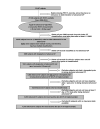Survival models to support shared decision-making about advance care planning for people with advanced stage cystic fibrosis
- PMID: 34031106
- PMCID: PMC8149438
- DOI: 10.1136/bmjresp-2020-000794
Survival models to support shared decision-making about advance care planning for people with advanced stage cystic fibrosis
Abstract
Background: For people with advanced stage cystic fibrosis (CF), tailored survival estimates could facilitate preparation for decision-making in the event of acutely deteriorating respiratory function.
Methods: We used the US CF Foundation national database (2008-2013) to identify adult people with incident advanced stage CF (forced expiratory volume in 1 s (FEV1) ≤45% predicted). Using the lasso method for variable selection, we divided the dataset into training and validation samples (2:1), and developed two multivariable Cox proportional hazards models to calculate probabilities of survival from baseline (T0 model), and from 1 year after (T12 model). We also performed Kaplan-Meier survival analyses.
Results: 4752 people were included. For the T0 model, FEV1; insurance; non-invasive ventilation; supplemental oxygen; Burkholderia colonisation; cirrhosis; depression; dialysis; current smoking; unclassifiable mutation class and cumulative CF exacerbations predicted increased mortality. Baseline transplant evaluation status of 'accepted, on waiting list' predicted decreased mortality. For the T12 model, interim decrease in FEV1 >10%, and pulmonary exacerbations additionally increased predicted mortality. Lung transplantation was associated with lower mortality. Of the 4752, 93.5%, 86.4%, 79.7% and 73.9% survived to 1, 2, 3 and 4 years, respectively, without considering any confounding variables. The models had moderate predictive ability indicated by the area under the time-dependent receiver operating characteristic curve (0.787, 95% CI 0.769 to 0.794 for T0 model; and 0.779, 95% CI 0.767 to 0.797 for T12 model).
Conclusion: We have developed models predicting survival in people with incident advanced stage CF, which can be reapplied over time to support shared decision-making about end-of-life treatment choices and lung transplantation. These estimates must be updated as data become available regarding long-term outcomes for people treated with CF transmembrane conductance regulator modulators.
Keywords: cystic fibrosis; lung transplantation.
© Author(s) (or their employer(s)) 2021. Re-use permitted under CC BY-NC. No commercial re-use. See rights and permissions. Published by BMJ.
Conflict of interest statement
Competing interests: None declared.
Figures
References
Publication types
MeSH terms
LinkOut - more resources
Full Text Sources
Other Literature Sources
Medical



